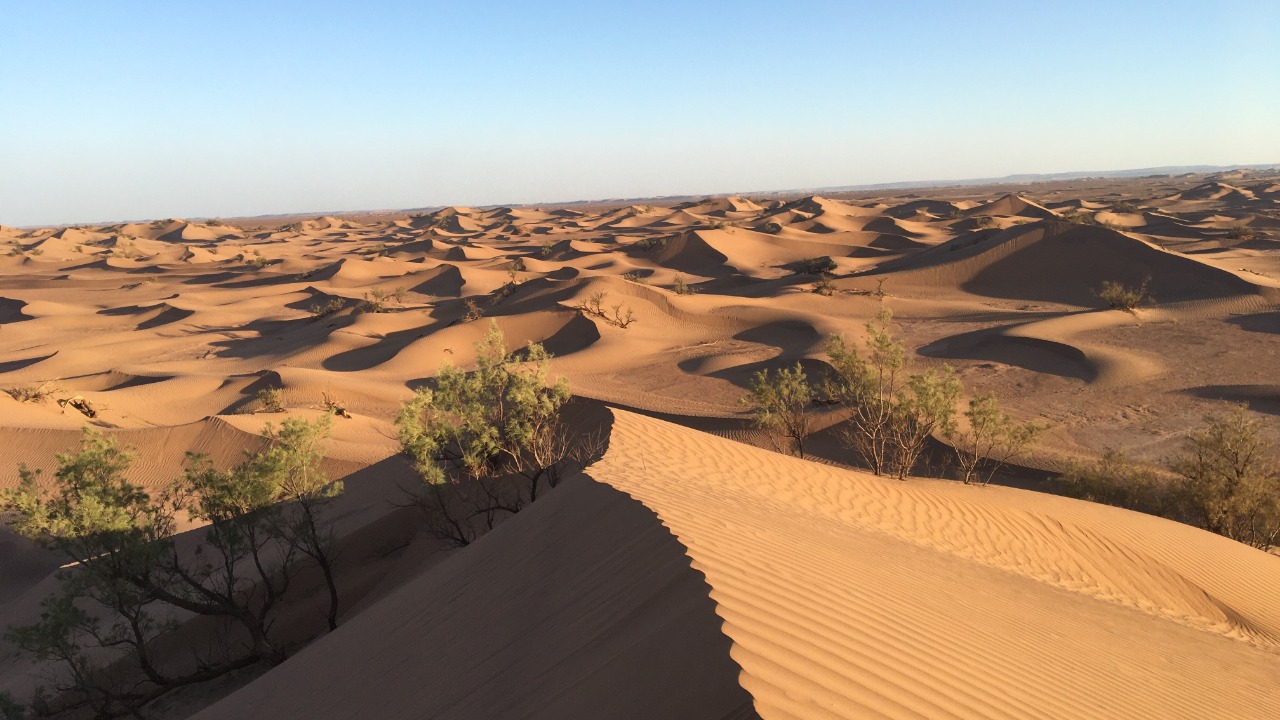
Recent studies have indicated a potential transformation of the Sahara Desert into a wetter and greener region due to rising global temperatures. This outlook is based on analyses of historical climate patterns, suggesting that the desert’s arid state may not persist indefinitely. Such changes could reshape ecosystems across North Africa and offer clues to broader global climate shifts.
Historical Cycles of the Sahara
The Sahara Desert, currently the world’s largest hot desert, has not always been the arid landscape we know today. Around 6,000 years ago, during the African Humid Period, it was a lush, green landscape. This contrast illustrates the natural climate oscillations that have shaped the region over millennia. Paleoclimate records show periodic wetting and drying phases, indicating that the Sahara won’t be a desert forever. Fossil pollen and remnants of ancient lake beds in the region serve as indicators of previous vegetation booms, further supporting this theory.
Mechanisms Driving Wetter Conditions
Climate scientists suggest that rising global temperatures could shift the Intertropical Convergence Zone northward, increasing rainfall in the Sahara. This shift is driven by enhanced atmospheric moisture from warmer oceans feeding into monsoon systems over North Africa. Furthermore, feedback loops could come into play where initial greening could amplify precipitation through increased evapotranspiration. These mechanisms are part of the reasons why rising global temperatures could mean a wetter future for the Sahara Desert.
Recent Scientific Predictions
Recent modeling studies have forecasted up to 20-30% more annual rainfall in parts of the Sahara by mid-century. These predictions, reported on November 3, 2025, also outline projections for vegetation expansion, including potential reforestation in southern Sahara fringes. While there are variations across models, there is a consensus on a greener future tied to greenhouse gas emissions.
Evidence from Sahara Storms
Recent stormy rains in the Sahara have provided valuable data for climate scientists. These rare deluges, documented on March 18, 2025, serve as harbingers of intensified weather patterns. Satellite and ground observations of these storms have provided data on moisture influx from distant Atlantic sources, connecting these events to broader climate change signals, including altered wind patterns.
Ecological and Biodiversity Impacts
The predicted greening of the Sahara could lead to significant shifts in flora and fauna. The return of savanna grasslands and acacia trees across former dunes could be possible. This could reopen wildlife corridors, benefiting species like migratory birds and gazelles. However, there are also risks of invasive species or uneven greening leading to biodiversity hotspots and gaps.
Socioeconomic Implications for North Africa
The potential greening of the Sahara could have significant socioeconomic implications for North Africa. There could be opportunities for the revival of agriculture in Sahel border regions, potentially supporting millions in food security. However, challenges like water management infrastructure needs amid variable rainfall forecasts would need to be addressed. Geopolitical angles, including transboundary resource sharing between countries like Algeria, Mali, and Libya, would also need to be explored.
Uncertainties and Future Research
While these predictions are based on sophisticated models, there are still uncertainties and limitations. As noted in the November 3, 2025 reporting, models may struggle to capture abrupt tipping points. There is a need for long-term monitoring of storm events to refine predictions. Ongoing studies integrating AI and satellite data could provide more precise timelines for the predicted greening of the Sahara.
More from MorningOverview